The McKenzie's Official world tour site
| | Sun | Mon | Tue | Wed | Thu | Fri | Sat |
|---|
| 26 | 27 | 28 | 29 | 30 | 1 | 2 | | 3 | 4 | 5 | 6 | 7 | 8 | 9 | | 10 | 11 | 12 | 13 | 14 | 15 | 16 | | 17 | 18 | 19 | 20 | 21 | 22 | 23 | | 24 | 25 | 26 | 27 | 28 | 29 | 30 | | 31 | 1 | 2 | 3 | 4 | 5 | 6 |
Search
Navigation
Categories
|

Tuesday, 26 May 2009
NEW ZEALAND ADVENTURES.........
KIA ORA!
Following a very fast two and a half hour flight with a tail wind all of the way – we landed into Wellington (South of the North Island, New Zealand), arriving from Sydney, Australia. We found out about Windy Wellington with that very landing, which was probably one of our most turbulent ever! We were very grateful to our pilot for his skilled landing but nobody applauded when we landed – is that another thing of the past?
A short taxi ride in the middle of the night got us safely to a local hotel in New Zealand – the home of the Kiwi!
We moved on to Lower Hutt, near Petone and stayed in a pine cabin on site until we could collect our next camper – which we have affectionately named KIWI!
Our next ferry trip was about three and a half hours over the Cook Strait on the Interislander from Wellington to Picton, on the South Island!
We have been in New Zealand for almost four weeks now and unfortunately our opinions of this amazingly scenic country have been seriously scarred by the overall percentage of wet and windy days – we estimate 98%! We have seen lots and lots of happy paradise ducks and many depressed and soggy campers (we do feel sorry for those who have chosen this time for a three week holiday). We have had to act quickly on those couple of dry days, to get some great pictures! The beautiful autumnal colours and turquoise waters, topped with a back drop of snow-peaked mountains is a huge understatement. These views are only given the very best deserved justice when the sun is shining........ those are the times when we caught glimpses of the most amazing picture postcards and our imagination is swept away by the scenery. The fiery orange and reds glow brightly against the crystal white snow........
Our morale’s are struggling and have hit a low on Macswayround- as we know that all this is out there- at arm’s reach and with many unique wildlife opportunities too - but it continues to rain wherever we choose to go ......we do seem to have lost the sunshine for now- but we are sure we will find it again, later on our travels!
Back to the beginning of the South Island – we stayed at Blenheim in the Malborough wine-growing region. We found a brand new camp at Murchison with a handy river to go for a quick fish. There was also a variety of strange looking toadstools down along the riverside. In the evening we got valuable travel advice and happy hour entertainment with Gordon (a very kind Scottish chappy who is now from Western Australia but has also lived in New Zealand) and his lady, Donna. We would like to thank them for their company and hope to meet again some day!
On our way along the West Coast to Greymouth we stopped off at Punakaiki and saw the Pancake Rocks and Blow – holes. Through a layering -weathering process called Stylo-bedding, the limestone has formed into what looks like piles of thick pancakes! And they really do! We are sure that Greymouth is a lovely place but for the time we were there it was – guess what – yes, raining!
Driving through the scenic west coast we saw spectacular snow capped mountain views and stayed at Franz Josef. There was a break in the wet stuff for long enough to go and see the Franz Josef Glacier and it was very odd to realise just how many thousands of years it had been there! This glacier and the one we saw next (Fox’s Glacier) are said to be the most accessible glaciers in the world. Franz Josef has an ancient Maori legend that tells of a girl losing her lover, who fell from the local peaks, and it was her floods of tears which froze into the glacier.
Lake Rotoiti was spectacular and we met Steve who has recently emigrated to New Zealand. We would like to wish Steve and his family well in their new venture. Later on we walked along Pikihi which is one of the only places to see kiwis in their natural environment, had we walked at night, as they are obviously flightless and nocturnal birds. A short walk that night, along a pitch- black local track allowed us to see some intriguing glow worms- doing what they do best!
After stopping off at the Fox’s Glacier we trekked to Haast and stayed at the campground there. Just opposite we chanced by a great walk along the Hapuka Estuary, saw a variety of wildlife and got information about the very popular Whitebait fishing procedures that take place seasonally in this area.
Our 300th day was spent being puzzled at the Stuart Landsborough Puzzling World in Wanaka. This attraction has many world unique scientific experiments and situations, including the slanting room, snooker balls that roll uphill, water that runs uphill and the room of famous faces whose eyes follow you wherever you are in the room! Spooky! There were challenging mazes, mind boggling illusions and many brain teasing puzzles to be entertained with and we ran out of time to explore! The toilets also need to be visited for a treat but we’ll leave that bit a secret! We helped an American guy who deserved all the credit for cycling around New Zealand- but was delayed with a puncture. We piled his bags and his bike into Kiwi and gave him a lift to catch up with his mate, who had not yet realised the absence of his cycling buddy! We had a good chat and it was strange to think that Geoff had only left Albuquerque, New Mexico, just a few days before we were there at the beginning of this year! He actually lived on the Old Route 66 and we must have driven past his door! We stayed at the Wanaka Lakeview Holiday Park and then trekked on towards Queenstown.
On the way there, as we sludged our way through the snow and along the highest paved road in New Zealand – we figured that it was probably our best bet to make friends with the local snow plough and gritting driver! Max had stopped for his break and accepted our offer of a cup of tea and a bacon sandwich! We were then happy to continue our journey as the mist cleared slightly and we were able to follow Max’s valuable work safely!
We got our real Kiwi fix at the Kiwi Birdlife Park in Queenstown and found out lots about these unique and flightless birds and other species of wildlife that are native to New Zealand, including the Tuatara. The park had an informative audio tour as we met some of the most endangered species, a conservation show and an Early Maori Hunting Village.
It was also good to meet our mate back home’s sister, Liz, in her Outdoor Sports Shop in the town. We stayed at the Creeksyde Top Ten in Queenstown.......
Next stop – Invercargill – the most southerly city in the world...........We hope the sun will shine......!
“SWEET AS”.....until next time ....
Tuesday, 26 May 2009 08:06:28 (GMT Daylight Time, UTC+01:00)  New Zealand
NEW ZEALAND ADVENTURES.........
New Zealand
NEW ZEALAND ADVENTURES.........
FACTOIDS:
• The National Icon of New Zealand is the Kiwi and the Fern is the National Emblem.
• Captain Cook made his first New Zealand landfall in 1769. He stepped onto New Zealand soil at Kaiti Beach on 8th October 1769.
• In New Zealand you may be permitted to drive at the age of 15 (between the hours of 6am and 10pm)
• In New Zealand you must be 18 to buy alcohol from the whole -salers, a pub or a night club, but you must be 25 years old to by alcohol in a Supermarket.
• Wellington is only the third largest city in New Zealand but retains its status as the capital City. (Many people assume Auckland is the capital, as it is much larger).
• Per Capita, the City of Wellington boasts more Cafe’s than New York City!
• South Island has an area of - 151,000 square kilometres, a population of 947,500 people and a temperate climate with snow in the mountain regions.
• Blenheim is the best place to access New Zealand’s biggest wine-growing district.
• Blenheim is one of the sunniest towns in New Zealand, boasting an estimated average of 2438 hours of sunshine a year! (we will let you know about that later!)
• Murchison was founded on man’s hunger for gold and for land, while the forces of nature contributed to dramatic ranges and deep fast flowing rivers.
• The early Maori knew Franz Josef as Ka Roimata OHine Hukatere – Tears of the Avalanche girl.
• The Fox’s Glacier has a depth of up to 350 metres. The glacier terminates at 250 metres above sea level. It has 35-45 metres of snow fall per year.
• New Zealand’s fourth largest lake, Lake Wanaka, sparkles on the edge of the town.
• The beautiful resort on the shores of Lake Wanaka is the gateway to Mount Aspiring National Park, a World Heritage Area containing magnificent mountains, glaciers and lakes.
• Queenstown has a well deserved reputation as the country’s Adventure Capital – White-Water Rafting, Sledging, Tandem, Parapenting, Flight Seeing, River Surfing, Canyoning, Heli-Skiing, Jet Boating and Bungy Jumping – to name but a few!!
• The “Shot-Over River in the Queenstown District is the second highest Gold –Bearing River in history, second only to the Klondike River in Northwest Canada. Gold was found in 1862 and the river was so lucrative it yielded a record breaking 57.6 kgs of gold in just one day! The river yielded 12 oz of gold per yard of gravel.
• The Remarkables Mountain Range (2343 m), around Queenstown is one of only two mountain ranges in the world that run truly North-South. The other mountain range is the Rockies.
• With the Main divide of the Southern Alps at its backbone, the Whataroa Valley is the spectacular gateway to New Zealand’s most outstanding scenery.
• The Tui is one of New Zealand’s Song Birds.
• The Kereru New Zealand Pigeon is the world’s second largest Pigeon.
• The Black Stilt is the Rarest Wading Bird in the World.
• The Kea is a cheeky parrot that lives high in the mountains of the south island. They have a reputation for eating the rubber from hiking boots!
• The Tuatara is a living dinosaur and has been here for 235 million years. Despite having a lizard-like appearance, the Tuatara has such different skeletal features that it belongs to an order of ancient reptiles all to itself. Today these reptiles are only found in New Zealand. The Tuatara does not like temperatures in excess of 28 degrees Celsius and have the ability to hibernate if the temperature drops below 5 degrees Celsius. On top of a Tuatara skull is a third eye. This is a complex organ which actually has a lens and a retina. It may be visible for the first 6 months of life and then gets covered over with opaque scales. This eye is thought to act as a pineal gland to detect seasonal changes by sensing the length of daylight and darkness.
• The female Kiwi can lay an egg which weighs up to 20% of her own body weight! This is the highest proportion of any bird. To put that into perspective it would be a similar experience to a woman producing a 37 lb baby!! The average Kiwi egg weighs about 450 grams (which is a similar weight to 6 hen’s eggs).
Tuesday, 26 May 2009 08:04:51 (GMT Daylight Time, UTC+01:00)  New Zealand
NEW ZEALAND ADVENTURES.........
New Zealand
NEW ZEALAND ADVENTURES.........
WILDLIFE HITS:
• Falcons
• Mallard Ducks
• Robins
• Bush Hens
• Fantails
• Lapwings
• Paradise Ducks
• Tom Tits
• Swamp Hens
• White Herons
• Blackbirds
• Black Backed Gulls
Tuesday, 26 May 2009 08:03:31 (GMT Daylight Time, UTC+01:00)  New Zealand
Bye Bye Australia.......
New Zealand
Bye Bye Australia.......
A COUPLE OF FINAL ‘PUZZLING’ AUSSIE FACTOIDS:
• Australia is one of the only countries (maybe the only country in the world?) to be allowed kill and eat two of their own National Emblems (the Kangaroo and the Emu).
• The only animals in Australia (maybe in the world?) who cannot walk backwards -are the Kangaroo and the Emu! (Many thanks to Donna for her thoughts!)
FINAL AUSTRALIAN WILDLIFE HIT- King Parrots
Tuesday, 26 May 2009 08:01:12 (GMT Daylight Time, UTC+01:00)  Australia
Australia

Wednesday, 13 May 2009
Some Final Aussie Pics.....
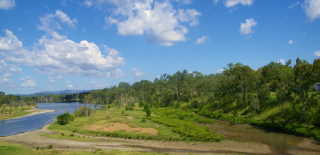
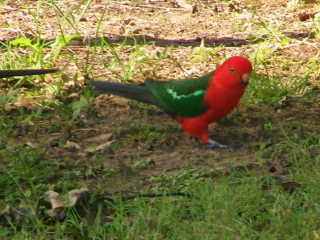

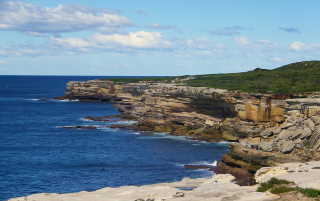
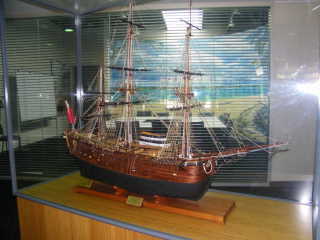
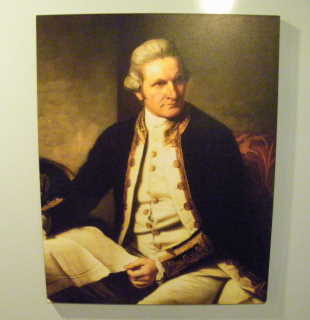
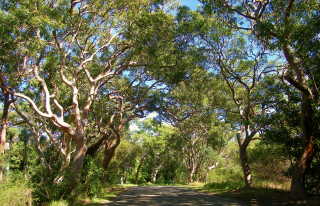
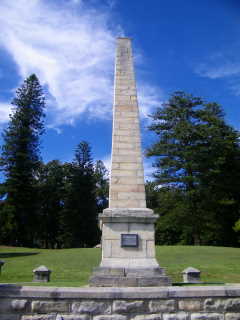
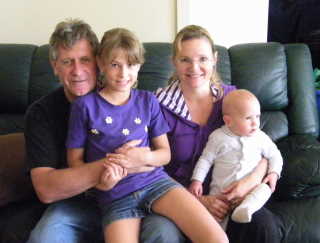
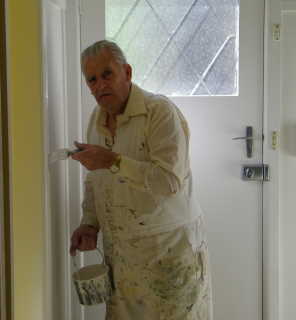
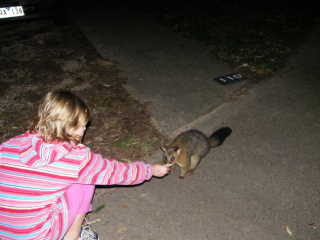
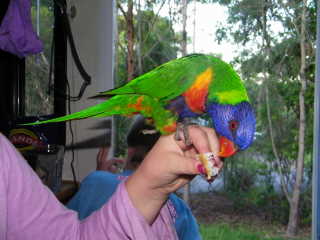 Wednesday, 13 May 2009 07:52:54 (GMT Daylight Time, UTC+01:00)
Wednesday, 13 May 2009 07:52:54 (GMT Daylight Time, UTC+01:00)  Australia
Final Australia times.................
Australia
Final Australia times.................
The Lake Mouduran Holiday Park at Gin Gin and the Recreation Ground at Canungra gave Ben a huge area to practice with his boomerang! We all nursed our mosquito and sand fly bites – especially the girls who must be sweeter!
At the Southport Olympic Swimming Pool, near Surfers Paradise-Jemma and Ben were very pleased to swim their furthest distances ever. Considering Ben was only just allowed to join us on Macswayround – by managing to swim his 50 metres, only weeks before we left......we are proud to say that Ben achieved his 1000 metres and Jemma achieved her 1500 metres! (not to be outdone – Mum & Dad did 1000 metres each too!)
After a night at Brunswick Heads Terrace Reserve, we continued travelling down the East coast to Nambucca Heads. The weather was still rather wet along here, after having suffered terrible flooding a few weeks ago.
One more extra long hit and we made it back to Sydney Tourist Park. We went along to Caringbah and met up with Phyllis again – this time at her son and daughter –in –law’s house. We met Jim, Sally and family and their decorator friend – Alan.
We went to Cronulla and around the local area and we saw the place where Captain Cook first stepped foot on Australian soil. There was an information centre in the Botany Bay National Park. We came back and had a lovely BBQ and we would like to thank everyone for finding room for us- amongst all of the decorating work that was taking place.
We said more goodbyes and travelled back to Lane Cove National Park (where Ben had his 7th birthday back in February!) Our final Australian Possum search was very fruitful that night and Jemma got the close- up encounter that she had been hoping for!
We returned Aussie to the Sydney Depot and were then kindly dropped off by them at the nearby railway station, with all our bags. This is where the trouble started as we had rather a lot of bags. We have accumulated a lot of extra baggage along our way. As we would have a change over train journey to get us to the airport we practised loading ourselves up. After we all had armfuls, back-full’s and pull along luggage attached to ourselves, we were not actually able to move very far at all. Which -ever way we tried- it was to no avail. We had to resort to a maxi-cab with a big enough boot for all our luggage! – woops!
As our time in Australia has come to an end, we would like to record how much we have enjoyed this extreme and diverse country. Our highlights have been the wildlife, the views, the most amazing colours that we have ever seen, and many friendly people along the way - to name but a few!
Many people have commented to us about the deceptive size of Australia and have said- ‘it is SO big – people don’t realise’ and YES – it is BIG! However, we have managed to cover enough miles in our 3 months to travel from Sydney to Perth and back again –twice!
This doesn’t mean that we won’t be back to explore some more......Because we will!!
During our travels we have been surprised by the number of fellow travellers who have either burnt all of their ties and bridges or kept some link to home – but have set out for a lifetime of timeless travel. At that point, we think that this becomes more than a journey and is eventually a way of life.............until next time – HOOROO!!
Wednesday, 13 May 2009 07:46:56 (GMT Daylight Time, UTC+01:00)  Australia
OUR LAST AUSTRALIAN WILDLIFE HITS
Australia
OUR LAST AUSTRALIAN WILDLIFE HITS
• Red – Tailed Black Cockatoos (male & female)
• Grey- Crowned Babbler
• Diamond Dove
• Butcher Bird
• Fig Bird
• Great Egret
• Apostle Bird
• Cane Toads
• Orange-Eyed Tree Frog
• Geckos
• Goanna
Wednesday, 13 May 2009 07:43:45 (GMT Daylight Time, UTC+01:00)  Australia
AUSTRALIA!
Australia
AUSTRALIA!
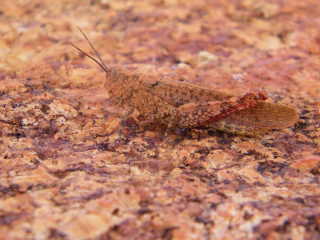
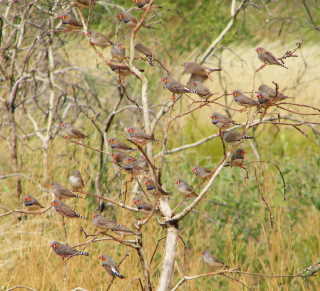
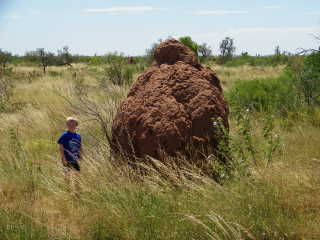
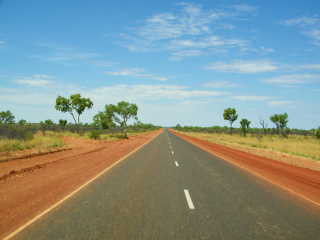

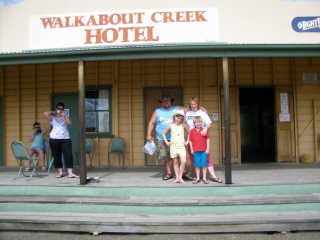
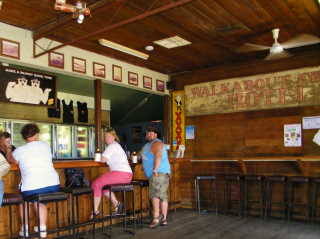
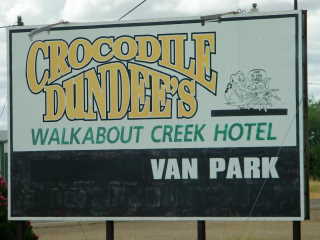
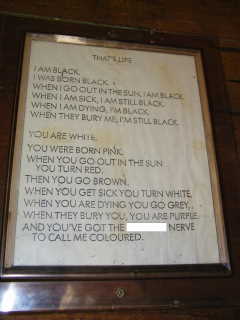
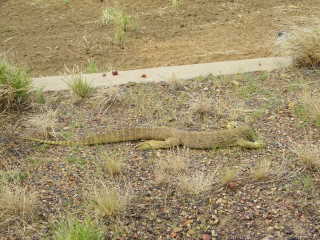
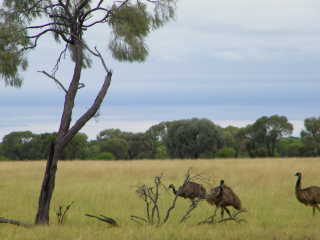
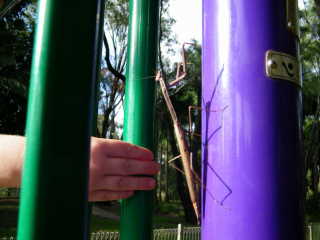
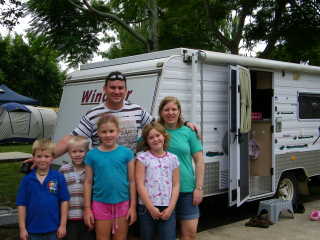
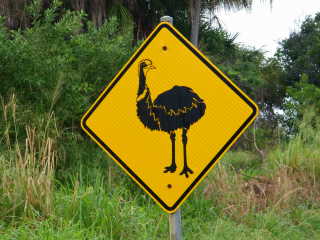
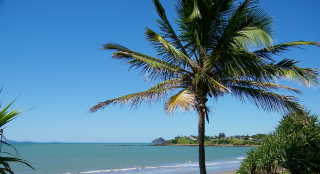
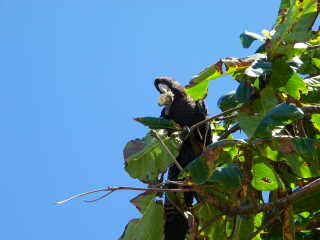
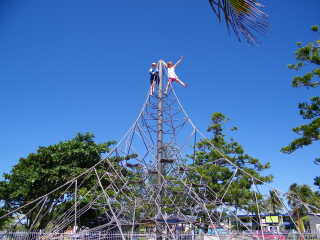
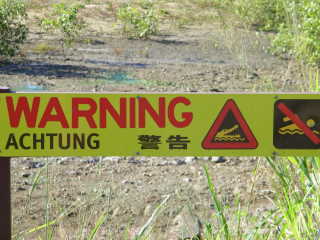

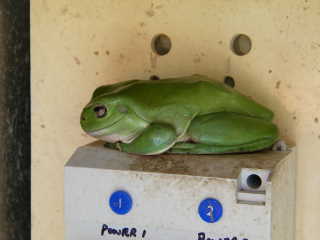
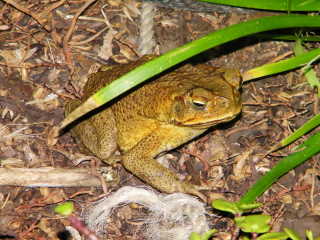
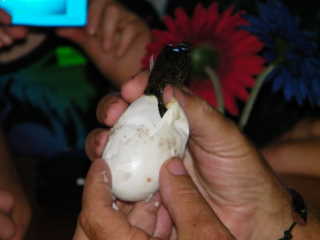
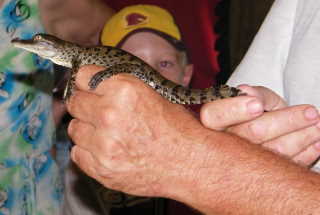
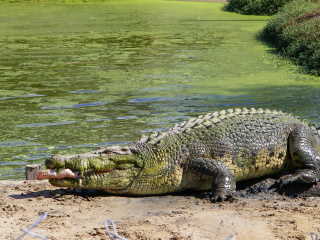
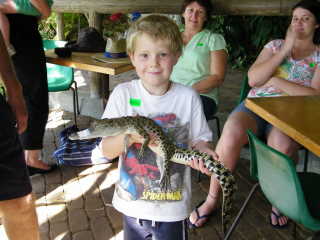

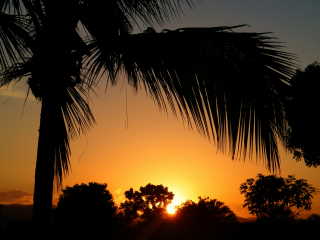
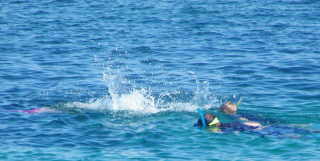
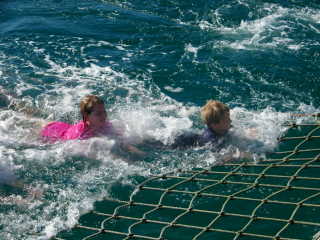 Wednesday, 13 May 2009 07:05:17 (GMT Daylight Time, UTC+01:00)
Wednesday, 13 May 2009 07:05:17 (GMT Daylight Time, UTC+01:00)  Australia
Australia

Monday, 11 May 2009
Tennant Creek to the Great Barrier Reef....
We stayed at Tennant Creek and saw some interesting and original Aborigine paintings. As we were now further north it was decision time....At Three-Ways, travellers decide whether to continue north towards Katherine and Darwin or to turn right and head east. As time was no longer on our side, we decided that our best option would be to turn right and leave the north of the Northern Territory until next time! We would not have time to explore the area and give it full justice so we would prefer to wait a while.
On our next stretch of road, we came our closest ever to running out of fuel. Phil knew that Aussie would usually have done 550 kms to a tank, but terrific head- on winds increased our fuel consumption dramatically (down to 450 kms!) and we must have been travelling on fumes as we glided down towards the town of Mount Isa. We thanked more of our lucky stars for the fuel station ahead (and for selling diesel too!). When we stayed at the Sunset Top Tourist Park we met up with Rob and Janice and compared local lingos and phrases. We would like to thank them for their words of encouragement- ‘fair dinkum!’
On Good Friday we made it to McKinley and to the infamous Walkabout Creek Hotel. This was not the best day to visit a pub in Australia, as we soon found out. They are not permitted to open at all on Good Friday – so we camped at the site behind the pub and waited until morning. We stayed inside Aussie as the little black flies were very persistent again! We watched the Crocodile Dundee films and it was very strange to be watching them, on the premises where it all originated from.
The next morning we had to have a pint inside the very traditional setting, with lots of photos and memorabilia on display. Unfortunately the ‘Never- Never Safari’s’ were no longer available!
At Winton, the home of ‘Waltzing Matilda’, we found out more about the song which is now often referred to as Australia’s un-official National Anthem. It was written by A. B Banjo Paterson in 1895. There are now three different versions of the original song.
Next we motored to Ilfracombe (near Longreach in outback Queensland) and pitched up at the caravan park. This campsite actually advertises that they hold happy hours most nights! This town is so called, as the architect came from Ilfracombe in Devon, UK. Phil was routinely stopped for a breath test on the way into Longreach, which took us all by surprise. This was for his first time ever – so he blew into the box and then we were able to continue along our way! Ilfracombe has one of the ‘oldest’ pubs in the area, which seemed strange to us -as it was only about 100 years old!
At Emerald we found a place to camp right under a railway track, which was fine until the middle of the night when a 101 trailer coal train passed through on its way to the Capricorn coast! We also went on a night walk with our mag-light to do some animal spotting. We had to dodge the toads all over the tracks and only later found out that these were Cane toads. Phil, Jemma & Ben grabbed the chance to do a spot of fishing here too and Jemma caught two fish this time (a fork -tailed catfish and a perch).
Next stop was Gracemere Caravan Park, along the Old Capricorn Highway, which was only five minutes away from Rockhampton. Here we met up with some more friendly neighbours- Dave, Yvonne and family. Their children were almost identical ages to Jemma and Ben and they all got along very well! We got talking about more recommendations to see and do and as the family come from Townsville, maybe we shall catch up again one day!
The Great Barrier Reef was our next mission and so we moved to the Causeway Caravan Park to get more information. There were giant mosquitoes around this area, all who thought we were very tasty. They were even swarming around on the outside of our fly nets!
We went down to the Causeway to find out some more and decided to take a ‘tinny’ motor boat out for an adventure! It was good fun but as a speed boat was zooming around there was little chance of us catching any fish! When we got back the children jumped ship and went for a swim along the shore. As we watched them, we had a dodgy encounter with a black and hairy spider that actually reared himself up at us (in anger?) We are still not sure what he was- but we weren’t sticking around to take any chances about how friendly he may or may not have been!
We made some telephone calls to finalise the arrangements for our campervan hire in New Zealand and went along to Keppel Sands. The Bill Kingel Caravan Park and folk were very welcoming and we even joined the local gang for a scrummy pizza and a beer at the local pub!
The Koorana Crocodile farm on the Capricorn Coast in Queensland was a very interesting and ‘safe’ place to find out more about these amazing creatures. John Lever and his family have been developing their thriving business for more than 25 years. There was a wealth of knowledge and information to be shared on a real life Crocodile Dundee guided tour! The many rescue and crocodile capture stories told were all very different and intriguing. We were very lucky to be able to watch a croc hatch from his egg – right in front of us! What a shock for him to come out and see all of us looking at him! Jemma and Ben got to hold another croc too – with his mouth taped up just in case!
Afterwards, our sample of crocodile pie was delicious and we would all have liked some more! It was difficult to compare the flavour to any other meat in our experience- but it was really tasty! Honest!
We took a fantastic trip on the Freedom Flyer, out from Rosslyn Bay to the Keppel Islands. The two largest of these islands are Great Keppel (1454 ha) and North Keppel (627 ha), and they are surrounded by 16 smaller islands. We took a full day cruise including morning tea and cakes upon arrival to the Keppel’s!
The Glass Bottom Boat was next on the agenda with a very informative commentary on a wide variety of sea life that we saw along the way. After a delicious BBQ lunch Phil, Jemma and Ben enjoyed snorkelling over the Plate, Tabletop and Stag horn Corals on the fringing Great Barrier Reefs. They saw fantastic colours and over 80 different varieties of fish and sea-life, including a sea snake - in less than 2 hours in the water! I enjoyed a beautiful walk along the shore, in the bright sunshine and waited for their return! We hope that the underwater camera will have captured some of those amazing moments – but we shall have to wait and see about that!
On the way back, Jemma and Ben had more great fun Boom-netting (or in the Ocean Spa for the more refined!) They laid back and held tight onto a net that was attached to the back of our boat – and were pulled along through the waves! At any time they got tired or got left behind, a speed boat member of the crew would come along to the rescue! Phil refers to this as ‘live bait trawling’!!
Everyone was exhausted after an amazing day – another highlight on Macswayround!
Monday, 11 May 2009 12:15:26 (GMT Daylight Time, UTC+01:00)  Australia
Tennant Creek to the Great Barrier Reef....
Australia
Tennant Creek to the Great Barrier Reef....
FACTIODS:
• With the discovery of gold in 1932, Tennant Creek celebrates humble beginnings as Australia’s last ‘gold rush’ town.
• Mount Isa is famous for having the ‘biggest Irish club ‘in the World!
• In 1923, John Campbell Miles sampled rocky outcrops and realised that it was heavily mineralised. He had stumbled on to one of the world’s richest copper, silver, lead and zinc ore bodies. He decided to call his discovery – ‘Mount Isa’.
• 86 years later, the Mount Isa mine is still one of Australia’s largest producers of copper ore and is Australia’s deepest underground mine.
• Mount Isa has a great climate with an average of 9.5 hours of sunshine per day and only 50 wet days per year.
• There are two distinct seasons –the ‘Wet Season’ which is from November to March and the ‘Dry Season’ centred on June, July and August.
• McKinley is a classic outback town with a Bush Nursing Clinic and Queensland smallest library.
• Winton holds the Guinness book of Records title for the longest road train- with 34 trailers- each with 20 wheels per trailer.
• Longreach is known as the birth place of QUANTAS airlines (Queensland and Northern Territory Air Service), with its first flight taking place from Charleville to Clocurry, and touching down in
Longreach and Winton en route in 1922.
• Emerald is surrounded by cotton farms and grain fields and the area also produces cattle, oil seeds, soybeans and citrus.
• The Gem fields around Emerald are the largest Sapphire producing fields in the southern Hemisphere. Keen fossikers can also find topaz, amethyst, jasper, chalcedony, tourmaline and diamond.
• Just west of Rockhampton, the town of Gracemere is home to the largest livestock sale yards in the Southern Hemisphere.
• Rockhampton is known as the ‘Beef Capital of the world’.
• Built on the back of gold and cattle, Rockhampton’s true blue heart is lovingly maintained in the heritage architecture, grand old pubs and the best steaks anywhere!!
• In 1858, gold was discovered at Canoona, approximately 50kms north of Rockhampton. 15,000 people arrived in the area in search of gold.
• 101 wagon coal trains regularly travel along the Capricorn Highway. The Bowen Basin extracts over 100 million tonnes of coal annually, making it Australia’s most important export commodity.
• It is possible to determine the outcome of the sex of a baby crocodile by adjusting the temperature of the incubator.
• When a crocodile first hatches – it has 63 teeth – this includes an odd tooth right on the end of his nose! This tooth has the sole purpose of helping the babe to break out of his egg shell and then the tooth is lost within his first 24 hours of life.
• There are two species of Crocodile – the Fresh Water and the Salt Water. It is the Salt Water variety that have eaten three people (that we know about), within the time we have been in Australia!
• The Great Barrier Reef stretches for approximately 2,000 kms and is visible from the moon. It is approximately 12,000 years old and is the largest natural feature on earth and the largest structure made by living organisms.
• The Great Barrier Reef comprises of approximately 2,900 individual coral reefs, covering an area of 348,000 square kilometres and is an established National Marine Park protecting about 400 species of hard and soft corals.
• The Great Barrier Reef is home to approximately 1,500 types of fish, 4,000 kinds of mollusc, 350 echinoderms and countless species of sponge, crustaceans and sea grasses.
• The Great Barrier Reef is one of the richest, most complex and diverse ecosystems in the world.
• The Great Barrier Reef is greater in area than the entire UK.
• At its widest the reef is 80kms wide, at its furthest out, it is 300 kms from the mainland coast, and at its tallest it is more than 500 metres thick.
• In 1770 Captain James Cook sailed Endeavour through Keppel Bay and was the first European to see the islands. He named the bay and the Islands after Rear Admiral Keppel.
• Male Seahorses give birth! They have a pouch on their belly which holds the eggs until they hatch. Seahorses are the world’s slowest fish!
Monday, 11 May 2009 12:05:45 (GMT Daylight Time, UTC+01:00)  Australia
Australia